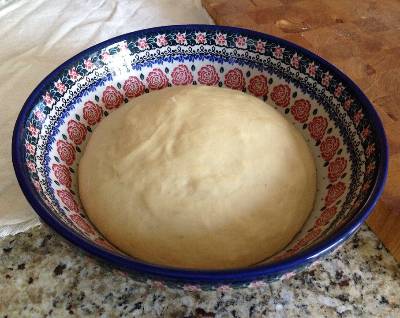Home Baked Bread for Christmas Dinner
TEXARKANA, Ark. –
For as long as I can remember, we always had grandma’s homemade dinner rolls during our holiday celebrations. The aroma filled the house, and that melt in your mouth taste, there is little to compare in my opinion.
Yeast breads are made when you knead the dough and distribute the ingredients evenly and it develops the gluten in flour, which provides strength, elasticity and structure to the bread. Kneading gives bread an even texture and a smooth rounded top. Kneading can be done by hand, with a heavy-duty mixer with a bread hook or with a heavy-duty food processor. Kneaded breads are usually shaped and usually require two risings.
Don’t be reluctant to make yeast bread, here are tips my grandmother passed down to me.
Make sure your yeast is fresh. Check the expiration date and discard any that is expired. Expired yeast won’t become active and the bread will not rise.
If you have rapid or quick rise yeast in the pantry, it can be substituted for regular yeast, just reduce the rise time by one half.
If you are unsure about the freshness of your yeast, test it before beginning. Dissolve 1 teaspoon of sugar in 1/2 cup of warm water (110 to 115 degrees F.). Slowly sprinkle one packet of yeast into the water. Stir the mixture and set a timer for 10 minutes. In 3 to 4 minutes, the yeast should have absorbed enough liquid to activate and will come to the surface.
If at the end of 10 minutes, the yeast has multiplied to the 1-cup mark and has a rounded crown, it's still active and can be used in your recipe. Remember to deduct the 1/2 cup of water used for the test from the total liquid used in the recipe. This process is sometimes referred to as "proofing the yeast."
Use a food thermometer to accurately determine the temperature of liquids. Yeast is a living organism. If the liquid in is too hot, it will kill the yeast cells. If it's too cold, it won't raise the dough. Use very warm liquid (120 to 130 degrees F.) if the active dry yeast will be added to dry ingredients. If it's to be added to liquid ingredients, use warm liquid (110 to 115 degrees F.).
Once the bread has been made and it is time to raise, place the dough in a warm spot to rise. Yeast dough’s rise best when the temperature is 80 to 85 degrees F. To make sure the dough is warm enough, cover the bowl loosely with plastic wrap sprayed with non-stick cooking spray, and then cover with a clean dish towel. Place the bowl on a wire rack over a pan of hot water in a draft-free spot, or place the bowl on the top rack of an unheated oven. Put a pan of hot water on the rack below it. Yet another option is to turn the oven on at 400 degrees F. for 1 minute, then turn it off. Place the bowl on the center rack of the oven and close the door.
Once the dough has risen you may want to test it to make sure that it has risen sufficiently. When you think the dough has doubled in size, lightly poke two fingers about one half inch into the dough. If the indentations remain, the dough has risen enough.
For more information contact me at the University of Arkansas Division of Ag in Miller County, call 870-779-3609, or e-mail me at Chadley@uada.edu. You can also get tips and recipes on facebook UAEXMillerCountyFCS/CarlaHaleyHadley, and twitter at @MillerCountyFCS.
As you bake for the holidays, start a family tradition at your house with home made yeast rolls. This recipe has been used in our family for as long as I can remember. It can be made ahead of time and kept in the refrigerator until you need the dough. Try it yourself for your Christmas dinner.
Grandma Browns Refrigerator Rolls
2 cups very warm water (120 to 130 degrees F.)
1/2 cup sugar
1-teaspoon salt
1/4 cup shortening
2 packages yeast
1/4 cup lukewarm water
1-tablespoon sugar
2 eggs, beaten
8 cups all-purpose flour, sifted
Mix 2 cups warm water, sugar, salt and shortening (no need to melt). Dissolve yeast in 1/4 cup lukewarm water and 1-teaspoon sugar. Add to first mixture. Add beaten eggs slowly and carefully. Stir in flour, 1-cup at a time blending thoroughly until dough is smooth. Turn out onto floured board and knead until smooth. Place in large buttered bowl. Cover bowl and set in refrigerator, use as needed. Knead dough every time you use it. Make dough in rolls and let rise until double in size, about one hour. Bake at 425 degrees for 15 to 20 minutes or until brown. Brush lightly with melted butter once removed from oven if desired.
By Carla Haley-Hadley
County Extension Agent - FCS
The Cooperative Extension Service
U of A System Division of Agriculture
Media Contact: Carla Haley-Hadley
County Extension Agent - FCS
U of A Division of Agriculture
Cooperative Extension Service
400 Laurel Street, Suite 215 Texarkana AR 71854
(870) 779-3609
chaley@uada.edu
The Arkansas Cooperative Extension Service is an equal opportunity institution. If
you require a reasonable accommodation to participate or need materials in another
format, please contact your County Extension office (or other appropriate office)
as soon as possible. Dial 711 for Arkansas Relay.
Pursuant to 7 CFR § 15.3, the University of Arkansas System Division of Agriculture
offers all its Extension and Research programs and services (including employment)
without regard to race, color, sex, national origin, religion, age, disability, marital
or veteran status, genetic information, sexual preference, pregnancy or any other
legally protected status, and is an equal opportunity institution.
